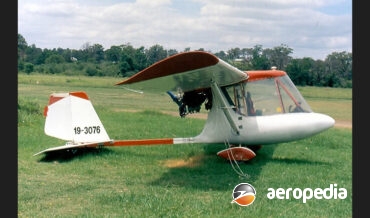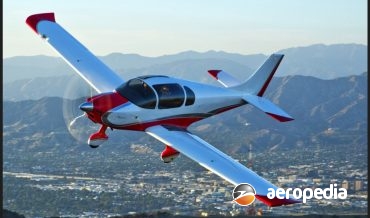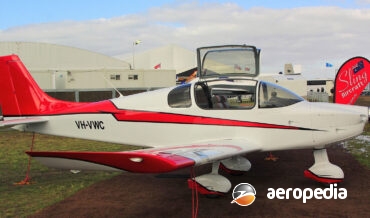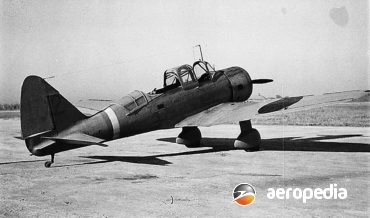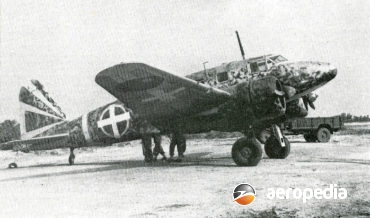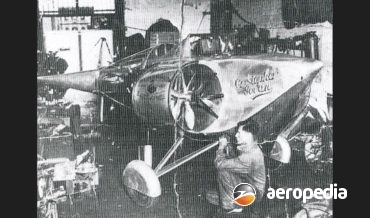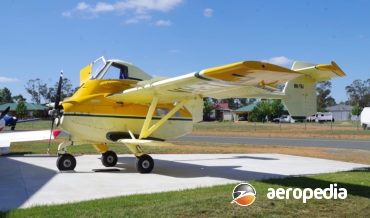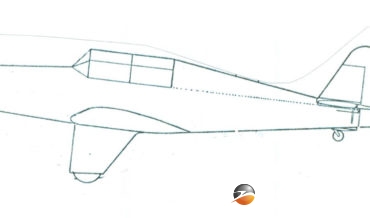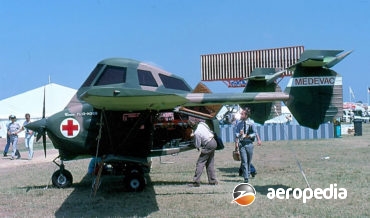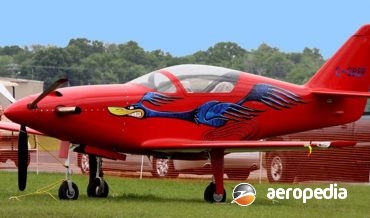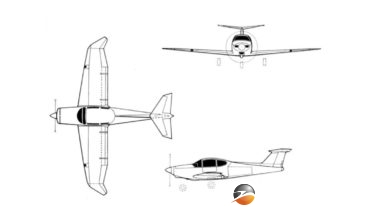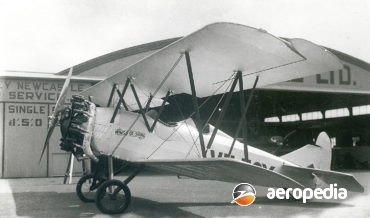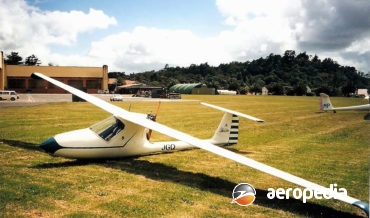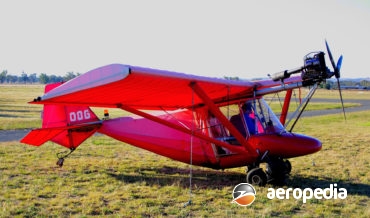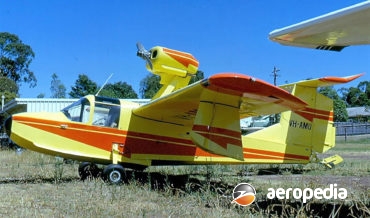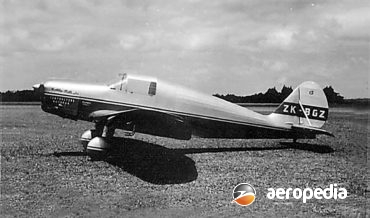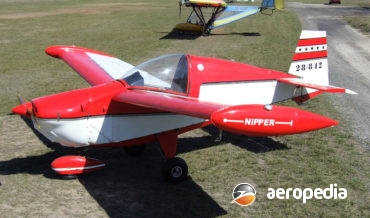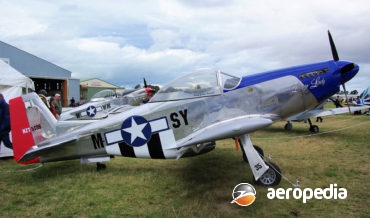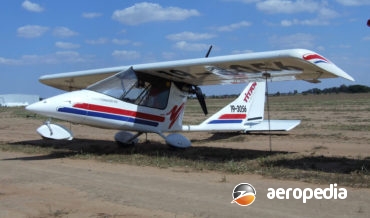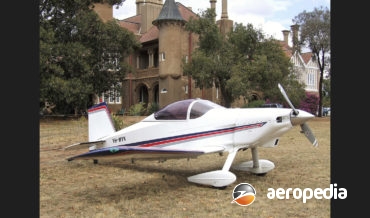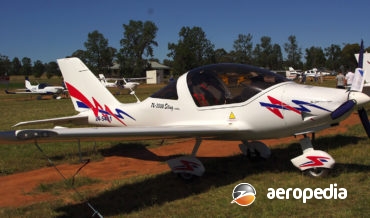All Contents
Contents
Photograph: Country of origin: Italy Power Plant: One 115 hp Rotax 912ISc four-cylinder horizontally-opposed air-cooled engine Specifications: Wingspan: 8.2 m (28 ft 2 in) Length: 6.6 m (21 ft 7 in) Height: 2.4 m (7 ft 9 in) Wing Area: 115 m2 (134.8 sq ft) Design manoeuvring speed: 178 km/h
David C. Eyre
- October 4, 2023
This was an ultralight aircraft designed and built by Graeme John Tygar and it was known as the Tygar Mk I.
David C. Eyre
- May 25, 2020
This was a single-engine, tricycle undercarriage light aircraft of amateur design and construction completed in mid 2008 by Lyndon Trethewey of Goolwa, SA.
David C. Eyre
- May 25, 2020
The Tiffin Tardo was a light aircraft built by Mr Tony Tiffin and is a one off. It is a three-axis aircraft built in 2003and based in South Australia and which was placed on the market for sale in 2015 with a total of 350 hours.
David C. Eyre
- May 25, 2020
The Terrafly was an ultra-light aircraft designed and built to meet the provisions of ANO 95-10 and was aimed at providing pilots with an aircraft that flew with similar performance to the Santos Dumont Demoiselle.
David C. Eyre
- May 25, 2020
The Shuttle was an ultralight aircraft produced in the late 1980s and early 1990s and had a high wing and an enclosed single-seat cockpit.
David C. Eyre
- May 25, 2020
In storage at the Moorabbin Air Museum is a collection of parts of an aeroplane called the Tait Flyer
David C. Eyre
- May 25, 2020
This was a scratch-built single-seat high-wing monoplane with good STOL performance that was similar in appearance to the Hughes Lightwing series.
David C. Eyre
- May 25, 2020
For years the four-seat, single-engine fixed-pitch propeller aircraft market was dominated by Cessna and Piper but in later years new designs have been placed on the market and one of these designs has come from Italian manufacturer, Tecnam.
David C. Eyre
- March 23, 2020
The Sling TSi first flew in 2018 and is produced by The Airplane Factory in South Africa and is a four-seat cabin monoplane fitted with a tricycle undercarriage developed from the company’s previous offering, the Sling 4.
David C. Eyre
- March 23, 2020
Following the success of the Sling 2 the company moved to the construction of a four-seat variant using similar production methods, offering the aircraft in ready-to-fly form or as a kit-built aircraft.
David C. Eyre
- March 23, 2020
In May 1937 a specification was issued for a two-seat co-operation aircraft for the Japanese Army and to meet this Mitsubishi put forward the Ki-35 and Tachikawa the Ki-36. In the event only Tachikawa received an order for a prototype to be built, the aircraft being designed by a team
David C. Eyre
- May 19, 2019
The Tachikawa Aircraft Co Ltd was founded in 1924 and was basically known for producing primary trainers for the Japanese Air Force from 1927. In 1940 work began on the Y-39, a low-wing twin-engine monoplane, which was built in a variety of variants to meet a number of needs.
David C. Eyre
- May 19, 2019
Following the success of the Curtiss OX-5 powered Model 2000, Travel Air moved on to the Model 3000, a three-seat open cockpit variant powered by a 112-kw (150-hp) Hispano-Suiza Model A engine or the high-compression Model E which produced 134 kw (180 hp).
David C. Eyre
- May 8, 2019
Designed by Richard Trickle and Vance Jaqua and first flown in 1991, the KIS is a two-seat all-composite amateur-built aircraft sold in kit form, the name KIS being an abbreviation of “keep it simple”.
David C. Eyre
- May 8, 2019
The TR-4 Cruiser is a development of the TR-1 and TR-2 Kis produced by Tri-R Technologies Inc of Oxnard California which is produced in kit form for the amateur constructor and may be fitted with a variety of engines.
David C. Eyre
- May 8, 2019
In 1933/34, following the announcement of the 1934 MacRobertson Air Race from England to Australia, there was great interest around the World and many persons and organisations set about entering suitable aircraft.
David C. Eyre
- May 8, 2019
In the early 1930s Messrs Leo Turl and Frank Gannon took over the Mascot hangar of General Aircraft Co. In November 1935 Mr J C Carpenter joined the company and Tugan Aircraft Ltd came into being.
David C. Eyre
- May 8, 2019
In the late 1950s Transfield Construction Pty Ltd was founded by two Italian immigrants to contract to do transmission line work in Australia. A subsidiary, Transavia Corp, was formed in 1964 to build aircraft.
David C. Eyre
- May 8, 2019
The development of the Hawk C3 was commissioned by Clifford Carpenter in February 1934, the aircraft being designed by James Connolly (Secretary of the Royal Aeronautical Society, Sydney Branch) who had previously designed two aircraft, known as the C1 and C2 but which were never built.
David C. Eyre
- May 8, 2019
To meet customer requirement, Transavia continued with further development of the basic Airtruk, and this led to the Model T-320 Airtruk fitted with the Rolls Royce/Continental Tiara 6-320-2B engine producing 239-kw (320-hp).
David C. Eyre
- May 8, 2019
In the 1990s Performance Aircraft designed the Legend as a high performance sport aircraft for amateur construction but the Company was later acquired by Legend Aircraft of Winnsboro of Lousiana.
David C. Eyre
- May 8, 2019
The PL-13 was one of the many designs by the profilic designer, Luigi Pellarini and was a four-seat monoplane.
David C. Eyre
- May 8, 2019
To meet customer requirement, Transavia continued with further development of the basic Airtruk, and this led to the Model T-320 Airtruk fitted with the Rolls Royce/Continental Tiara 6-320-2B engine producing 239-kw (320-hp).
David C. Eyre
- May 8, 2019
For some years after World War II the Transland Aircraft Company of Torrance, California, a division of Hi Shear Rivet Tool Co, converted surplus World War II aircraft, particularly trainers, for the crop-dusting role.
David C. Eyre
- May 8, 2019
The Travel Air 2000 was a three-seat biplane built as a cross-country type of ‘outstanding quality’ of rugged construction with a lively performance, and as an efficient work aircraft.
David C. Eyre
- May 8, 2019
The Thruster Glasshouse was one of the many ultralight designs from Steven Cohen and was produced by Thruster Aircraft commencing in 1984.
David C. Eyre
- May 8, 2019
In the 1950s Reginald Todhunter became involved in sailplanes and started a business Glidair Sailplanes at Bankstown, NSW, where he repaired gliders.
David C. Eyre
- May 8, 2019
Thruster Aircraft, an Australian firm, built light aircraft at Kirrawee, NSW, for many years, later carrying on this work of construction and development of the series at Evans Head on the NSW north coast.
David C. Eyre
- May 8, 2019
In 1967 brothers, Reginald and Ernest Todhunter, who at the time lived at Condell Park, a western Sydney suburb, commenced the design of a man-powered aircraft to enter the Worldwide competition announced by Henry Kremer, a British Industrialist, of a sum of $75,000 for the first group to build and
David C. Eyre
- May 8, 2019
The Teal amphibian was designed by David Thurston at Sandford in Maine, USA as a two-seat light amphibian for the sportsman pilot. It was fitted with a 112-kw (150-hp) Lycoming engine and a T-tail.
David C. Eyre
- May 8, 2019
The Cobra Arrow is an Australian designed and built light two-seat high-performance aircraft aimed at the sporting pilot, designed by Thomas Wickers, being supplied by the manufacturers, known initially as Tomair but later as Cobra Aviation, in kit form to the amateur constructor.
David C. Eyre
- May 8, 2019
Ernest Oscar Tips was the chief designer of Avions Fairey SA in Belgium in the 1930s, designing and building his first aircraft, the Tipsy S.1, a single-seat ultra light, in the company’s works at Gosselies, Belgium in 1935.
David C. Eyre
- May 8, 2019
The Explorer has been produced by Tomair for the Australasian market and the aircraft is basically a high-wing variant of the Cobra.
David C. Eyre
- May 8, 2019
The Nipper was designed by Mr E O Tips, who was managing director of Avions Fairey SA in Belgium. Previously Mr Tips had designed the Tipsy S, Tipsy B, the Belfair, Primer Trainer, and the Junior.
David C. Eyre
- May 8, 2019
The Viper SD-4 is a two-seat light sporting low-wing monoplane with a fixed tricycle undercarriage designed and produced in Slovakia. Design work commenced in 2004, the prototype flying for the first time on 1 November 2006 and it entered production in 2008.
David C. Eyre
- May 8, 2019
The T-51 is manufactured in kit form by Titan Aircraft of Austinburg, Ohio, as a two-seat 70% scale replica of the North American P-51D Mustang and is aimed at the light sporting market. It can be fitted with a variety of engineers up to 112-kw (150-hp) but is usually fitted
David C. Eyre
- May 8, 2019
The Tornado is marketed in kit form by Titan Aircraft of Geneva, Oklahoma, in a variety of models. The Tornado I is fitted with a 37-kw (50-hp) Rotax 503 two-cylinder two-stroke engine and has a gross weight of 340 kg (750 lb).
David C. Eyre
- May 8, 2019
Designed by John Thorp in the USA, the T-18 has been one of the most popular home-built light aircraft for amateur construction, hundreds having been built around the world.
David C. Eyre
- May 8, 2019
The TL Sting series of light aircraft is manufactured as a type certified ultralight aircraft in the Czech Republic and has been available in Australia in a number of models for some years.
David C. Eyre
- May 8, 2019
Recent Comments
Archives
Categories
- No categories
Categories
- No categories
Latest Posts
Newsletter


